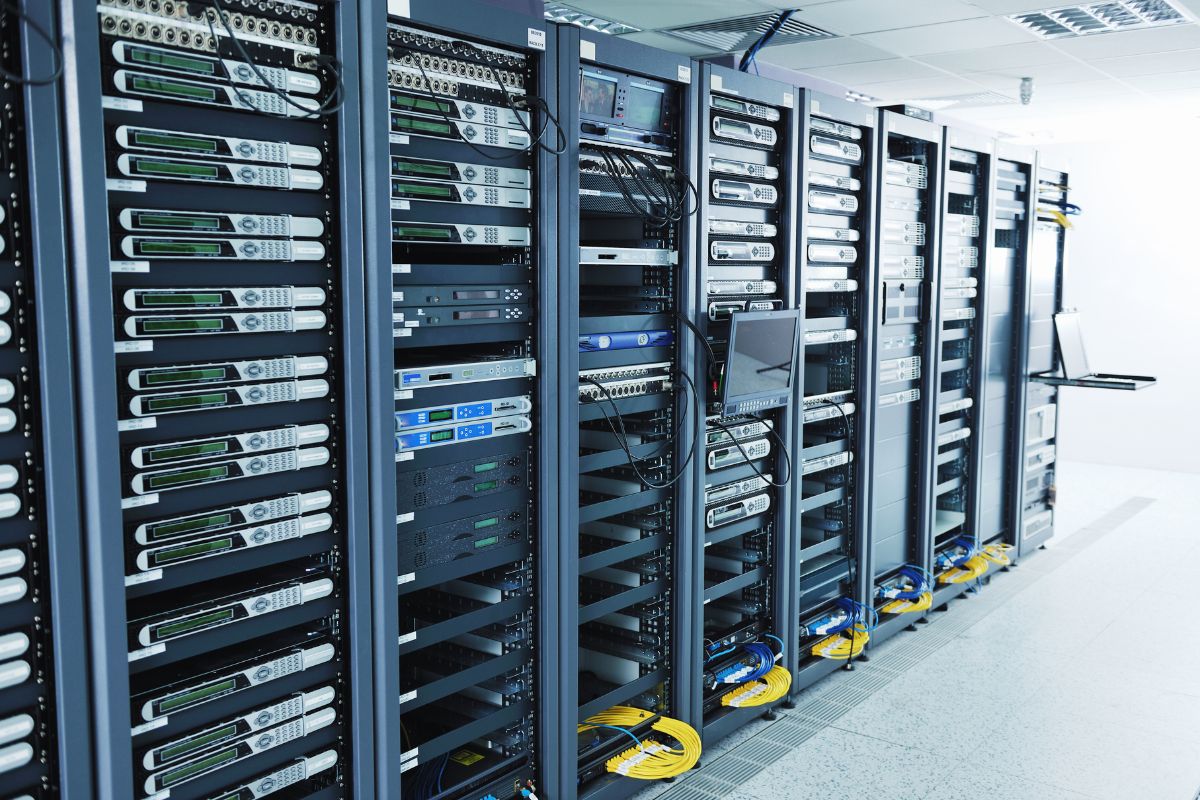Edge Servers Versus Rack Servers: Which Is Better?

Do you know the contrast between a cutting-edge server and a rack server? In the event that is not, sit back and relax. You’re in good company!
Many individuals are uncertain of the distinctions between these two sorts of servers on account of the numerous servers available. To more readily figure out cutting-edge servers and rack servers, we should investigate each sort of server and its key elements.
A sharp-edge server, which is a high-thickness server, is a minuscule PC that oversees and circulates information across a few PCs and organizations. It fills in as a connection between machines, projects, applications, and frameworks.
What Is A Rack Server?
A rack server, then again, is a kind of server that is commonly mounted on a rack. Rack servers are typically more affordable than edge servers and are all the more generally utilized in little and medium organizations. They are likewise called rack mount PCs and rack-mounted servers.
Here, we’ll separate the advantages and disadvantages of sharp-edge servers and rack servers with the goal that you can arrive at an educated conclusion about which server is appropriate for your business.
How About We Get Everything Rolling?
Rack Server Versus Edge Server: Must-Know Realities
- Edge servers are overseen by the Cisco UCS chief through the UCS Texture, while rack servers can be overseen both freely or by the Cisco UCS director.
- Sharp edge servers highlight hot-trading abilities that permit parts to be added or taken out without turning off the servers. Rack servers don’t require hot trading as the entirety of their parts are inbuilt.
- Cutting edge servers are mounted on a frame that can uphold different servers while rack servers are mounted on a rack.
- The plan highlights that cutting edge waiters and rack waiters are appropriate for medium-to-huge associations and little associations, individually.
- The sharp edge servers don’t uphold an optical drive while, for the rack servers, the optical drive at the front board is discretionary for both Album and DVD media.
- Edge servers are mounted on a frame that can uphold numerous servers, while rack servers are mounted on a rack.
What Are The Highlights Of Edge Servers?
Plan
Sharp edge servers have a slim plan that permits a few servers to be obliged in a more modest space. They have a few parts, including computer chips, memory, worked away drives, and organization regulators.
Their capacity to have a few servers in more modest regions and their high handling power makes them ideal for use in huge server farms. Different servers are many times slid on a huge suspension mounted on a server rack. This empowers the utilization of fewer parts as well as empowers more proficient activity of the machine. Accordingly, they give the most elevated handling power per Rack Unit (RU), notwithstanding the little space they involve.
Power
The edge servers include a frame with a few servers slid on it. This extraordinary plan permits the framework to disseminate capacity to all servers in a solitary nook, consequently consuming less power. By keeping all servers in a solitary frame, fewer parts will be expected to run every server.
Pros
- Fits in little spaces
- Consumes less power
- Fewer links are utilized
Cons
- Higher cooling costs
- Rack Servers: Grew Sooner than Edge Servers
Dissimilar to sharp edge servers, rack servers were grown before on, after the quick expansion in server innovation advancement and use. The Compaq’s ProLiant Series’ very first rack server was created in 1993. Because of mounting a few servers on one rack, associations could save money on space. Notwithstanding, keeping the servers in encased regions prompted heat development, which saw the advancement of cooling frameworks to direct temperatures.
At around a similar time, associations needed to move these servers to single rooms after they obtained extra innovation. These rooms were generally alluded to as “server rooms” and were for the most part away from typical office spaces. Ultimately, these associations saw the need to plan exceptional spaces for servers to address these frameworks’ temperature and security dangers. This move at last prompted the advancement of the current server farm.
Edge servers are for the most part prescribed for medium to huge estimated organizations, while rack servers are viewed as best for more modest organizations.
What Are The Elements Of Rack Servers?
Plan
Rack servers’ extraordinary and broadly useful plan permits them to be mounted on a server rack and empowers them to help a few prerequisites subsequent to being designed. They worked to function admirably in huge server farms and little PC bureau nooks. They vary from cutting edge servers in that they consume bigger spaces. While huge servers require extra parts like computer processors and memory, you can use a more modest space by mounting every server on top of the other. Nonetheless, utilizing numerous servers will increment front and center expenses related to the machine.
Power
The rack server is known to deliver more power contrasted with edge servers. This is basically on the grounds that rack servers accompany every one of the parts it necessities to work successfully, as they are been inherent. The power makes it reasonable for very good-quality applications.
Pros
- Delivers high power
- Functions admirably in little, medium, and huge applications
- Hot-swappable
Cons
- It Consumes a great deal of room
- Requires heaps of links
Edge Server Versus Rack Server: What’s The Distinction?
There are tremendous contrasts between cutting-edge servers and rack servers. Here are some of them.
Mugginess Control and Cooling
Servers produce a ton of intensity when functional. While the quantity of starting establishments in cutting-edge servers impacts their air temperature, rack servers impact the number of servers inside.
Cutting edge and rack servers have inherent stickiness control including that advance wind current and eliminating warm air, empowering the servers’ compelling activity. As to costs in cutting edge servers and rack servers, it’s higher with sharp edge servers because of their higher focus.
Arrangement of Parts
Sharp edge waiters are more reasonable for information grouping because of their elite exhibition abilities. Their inward design incorporates hot-swappable abilities, permitting you to add or eliminate parts from the server without turning off the framework. This assists with diminishing margin time related to the framework.
Rack servers are outfitted with all parts, and the link makes the association. In any case, every one of the parts of the server works freely. You don’t need to add different parts for the extension as the server highlights memory, stockpiling, and computer chips that are added during its underlying establishment.
Utilization
Cutting edge servers have high adaptability, upgradeability, and handling power, making them ideal for high-accuracy projects and space preservation. Additionally, sharp edge servers might be obliged inside racks in edge frameworks, where they are viewed as a certain something.
Rack servers are great for a large number of purposes. Their capacity to function admirably in exceptionally PC-concentrated applications and their high versatility, expandability, and upgradeability make them the favored server in modern, business, and military use.
Which One Is Better? Which One Would It Be A Good Idea For You To Utilize?
The solution to this question relies upon your particular necessities and prerequisites. In the event that you have restricted space in your server farm, an edge server is the better choice. A rack server is the best approach in the event that you’re searching for a more practical server. At last, gauging every one of the upsides and downsides of each sort of server prior to going with a choice is significant.













